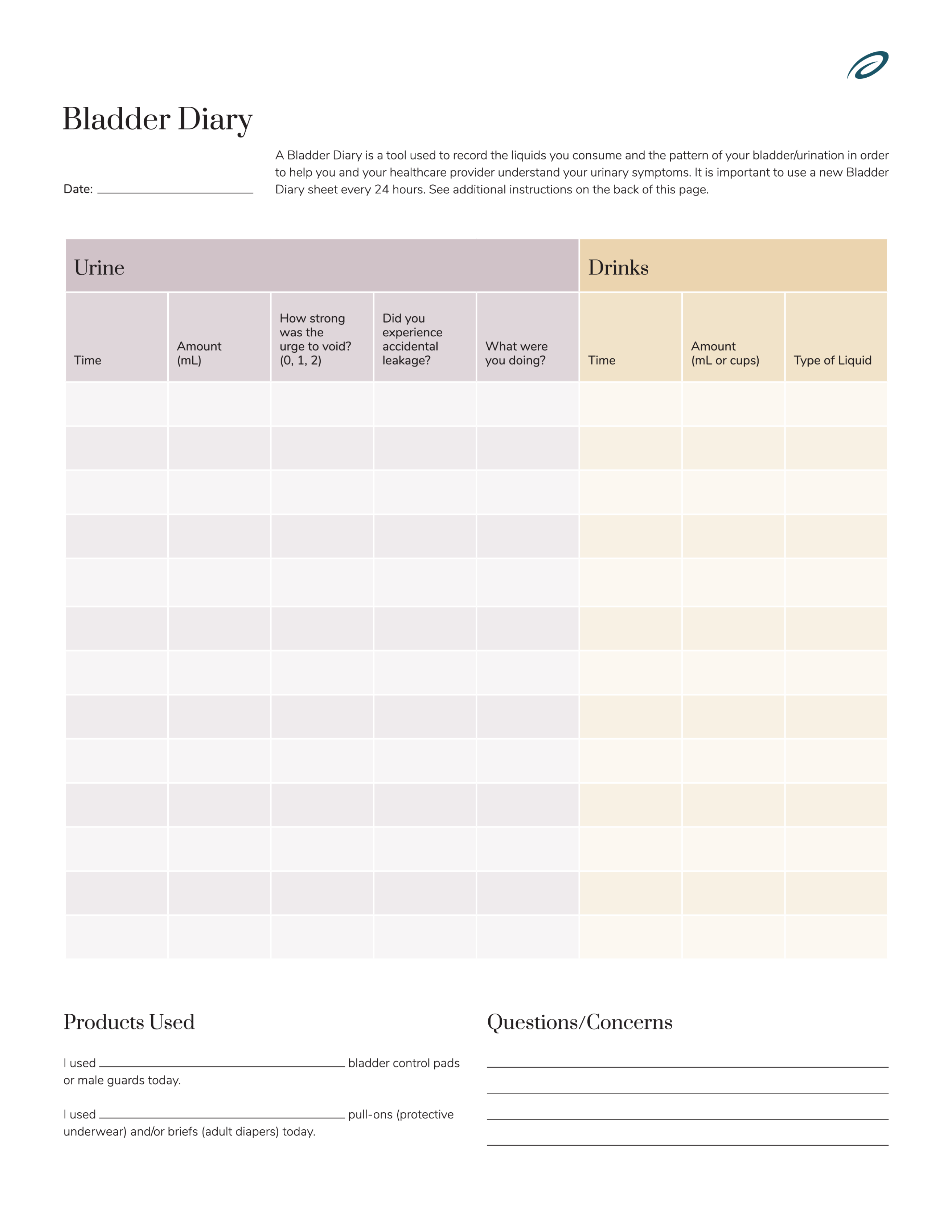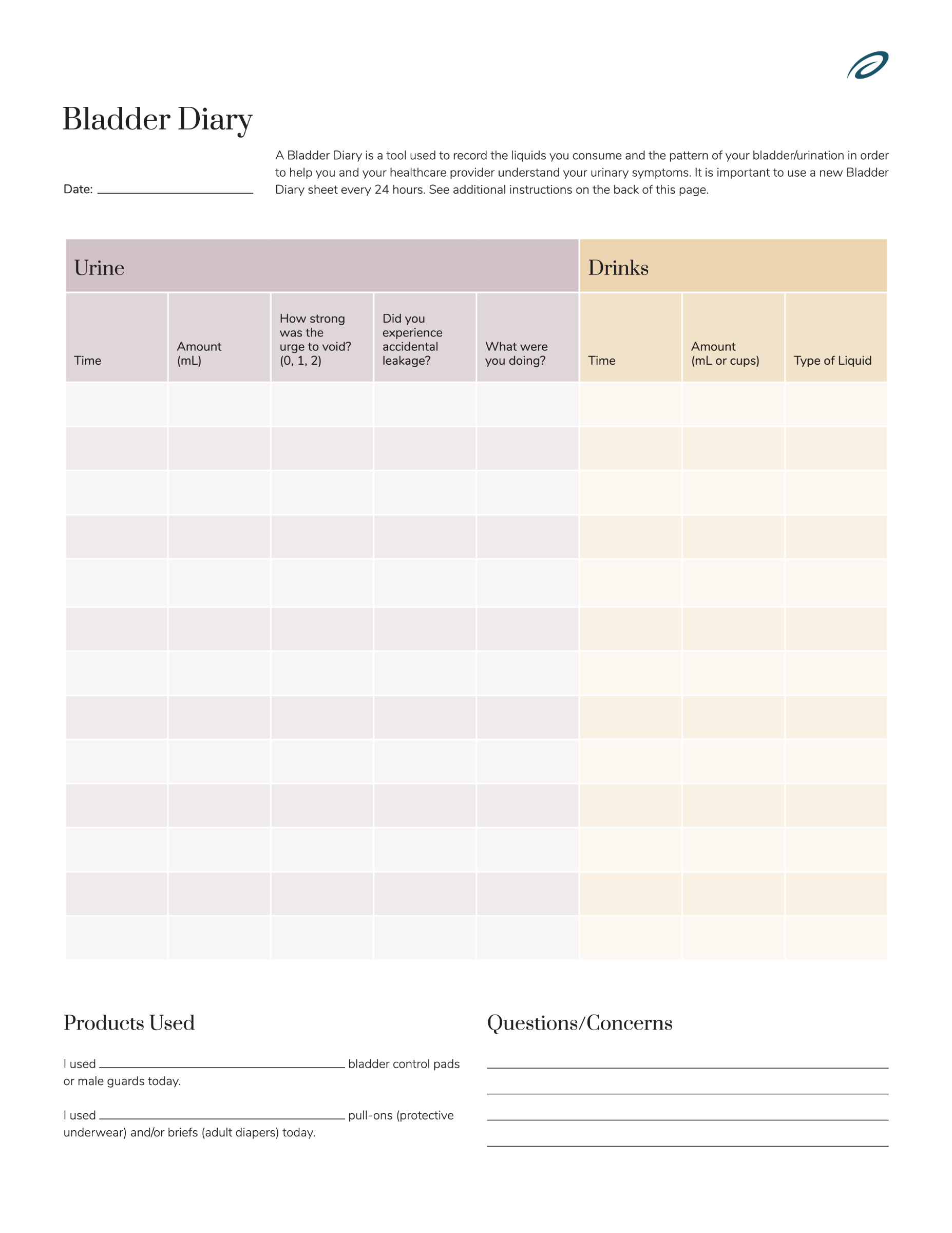Using a Bladder Diary
This piece has been medically reviewed by Susie Gronski, PT, DPT, Medical Advisor at Aeroflow Urology.
If you regularly experience incontinence symptoms, it might be time to start using a bladder diary. A bladder diary, or voiding diary, is a helpful tool that can keep track of your bathroom habits and can help you regain control of your bladder. Tracking your bladder habits can help you learn your triggers, symptoms, and urination schedule so you and your healthcare provider can create a customized treatment plan catered to your individual needs.
How Does a Bladder Diary Work?
You can begin by downloading our bladder diary for reference. You will need to record your urinary habits for at least 1-2 consecutive days in order to detect patterns. Also, be sure to take your diary to your next healthcare appointment to help determine the type and severity of incontinence you are experiencing.
Check Your Eligibility
In 2 easy steps!
Discover the bladder control supplies covered by your Medicaid plan.
Your incontinence diary should include:
Time. The time of day that you urinate.
Amount (mL). The amount of urine that you pass. You can get a rough idea of how much urine you pass by counting the time it takes to void the bladder. Ten seconds of constant urine flow is approximately 300mL. It is important to count evenly - i.e. 1 one thousand, 2 one thousand, etc.
Urge to void. How strong was the urge to void? Tracking the level of urge can help your healthcare provider determine how your daily activity is impacting your urinary incontinence.
- 0 - I did not experience any strong urges to urinate.
- 1 - I had to go within 10-15 minutes of the initial urge to void.
- 2 - I had to stop everything I was doing to use the restroom right away.
Accidental leakage. Did you experience any accidental urine leakage?
Activity. What were you doing when you experienced the need to urinate or experienced a loss of bladder control? (i.e. walking around the neighborhood, sitting on the couch, etc.)
Your fluid intake. Record how much and what type of liquid you drank and document any supplements or medications, as these can influence bladder function and continence control.
Products Used. Monitoring the amount of continence care supplies you use each day can also be a helpful indicator to your healthcare provider.
Questions/Concerns. List any questions or concerns you may have during the day to discuss further with your healthcare provider. It is especially important to report any pain you experience with urination. In addition, list any other symptoms you experience around toileting (pain, pushing, straining to urinate, difficulty with toileting, etc.)
Keeping a detailed bladder diary will provide a clear idea of your symptoms to your healthcare provider. Your bladder diary can help you understand your continence overall. For example, you may discover that you’re using the restroom a lot more than you thought, or avoiding certain activities due to the fear of leaks or accidents.


Why should I record what time I go?
Recording what time you use the bathroom during the day can help you determine if your body is on a schedule or not. If you’re going like clockwork then you can plan ahead for bathroom breaks instead of being surprised once the urge strikes.
Why should I record what I eat and drink?
Taking note of what you eat and drink, how much, and when will help you determine if you’re consuming items that trigger your incontinence symptoms or not. For example, a large cup of coffee may increase the amount of pressure on your bladder, causing an intense urge to go. Other possible triggers include caffeine, chocolate, spicy foods, fried foods, alcohol, and items high in sugar. By learning your triggers, you’ll be able to tell what foods and drinks need to be avoided before and during important events.
Why should I record when I leak?
The way you leak urine may indicate which type of urinary incontinence you have. For example, leaking while you laugh, exercise, or sneeze suggests that you may have stress incontinence. However, experiencing sudden pressure to urinate and fully emptying your bladder is more closely related to urge incontinence.
Why should I record any pain?
Pain and where it’s located may indicate underlying contributors to your incontinence. Pain or frequent urination can also indicate that you have an infection such as a urinary tract infection (UTI).
Do bladder diaries really work?
Yes, they provide the whole picture which allows clinicians to get to the root of what’s causing your incontinence, which in turn allows them to build the best treatment plan possible.
When 214 participants were studied, those who recorded their urinary movements for seven consecutive days were able to report stable and reliable measurements of their incontinence issues.
Information provided on the Aeroflow Urology website is not intended as a substitute to medical advice or care from a healthcare professional. Aeroflow recommends consulting your healthcare provider if you are experiencing medical issues relating to incontinence.

